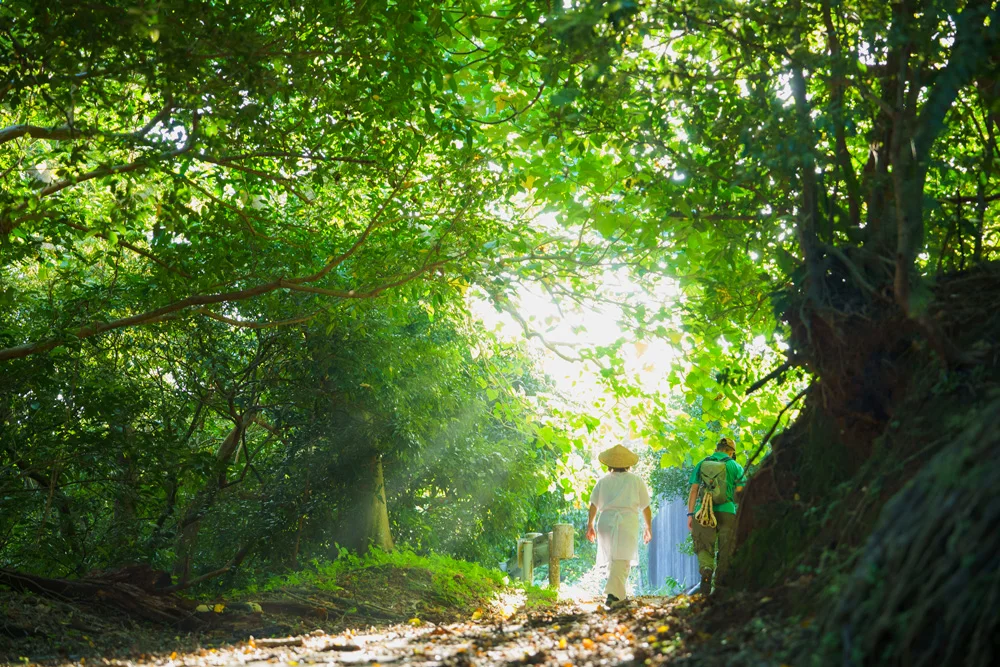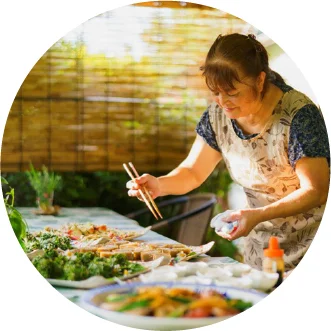
Articles #02 faith
Journey through Yambaru:
Where Life Rejoices
Deities that Dwells in Nature and Ourselves
In Okinawa, the tradition of honoring nature and ancestors as deities is still alive. Yambaru preserves this rich cultural heritage, where families and communities carry on various customs and rituals in everyday life.
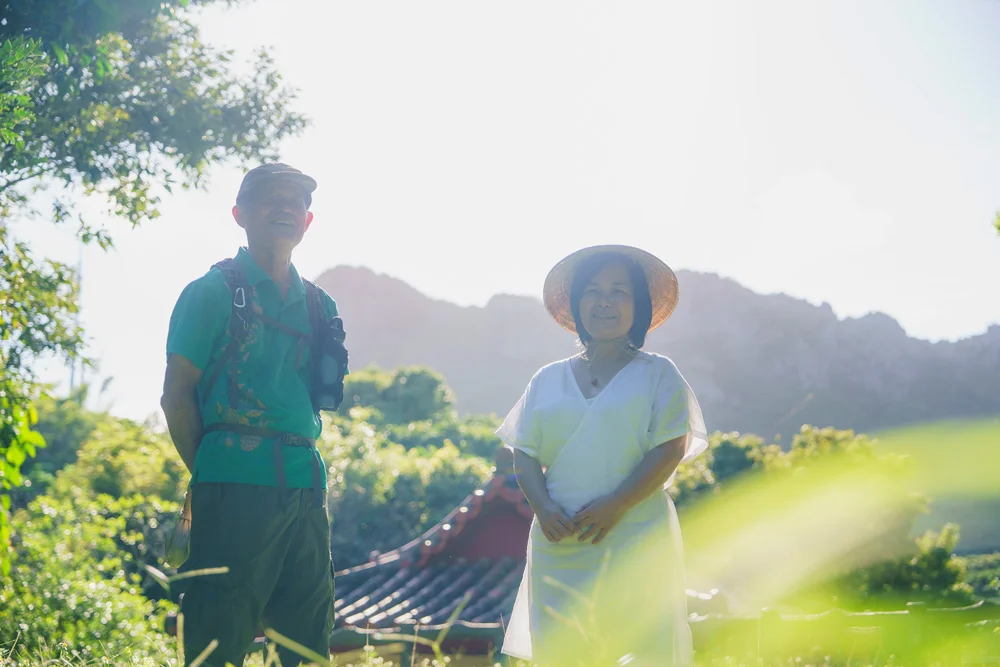
Futoshi Taira, who was born and raised in Hedo village and once served as its chief, is dedicated to keeping the village’s 500-year-old traditions alive. He has created a village tour program and has even transcribed the unique Eisa music—performed as an offering to the gods—into Kun Kun Shi, Okinawan Sanshin sheet music.
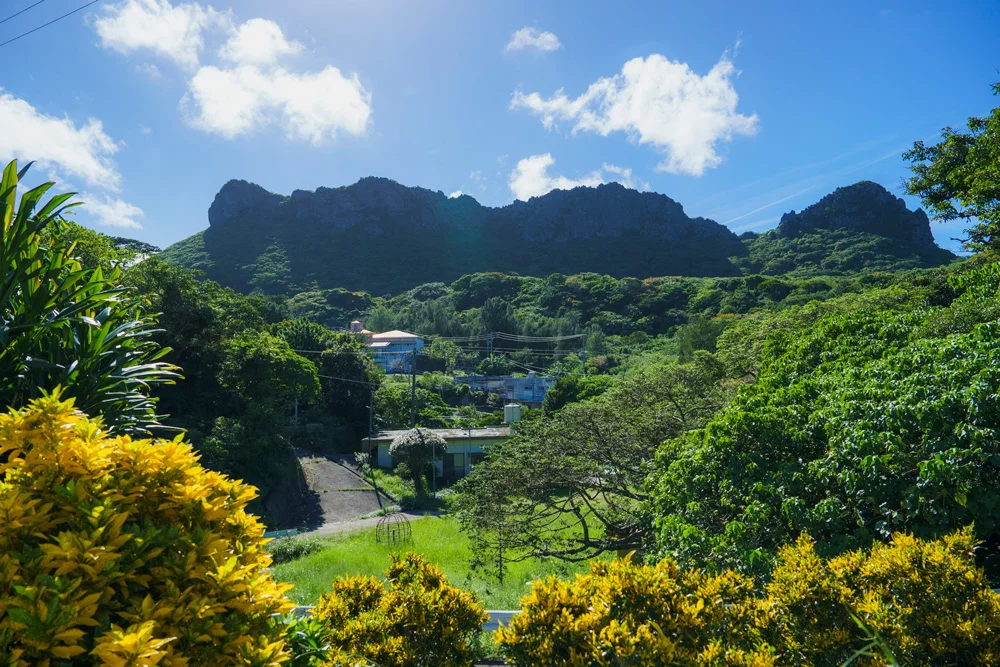
Standing guard over the village is the majestic Asumui, a mountain venerated as sacred. According to Ryukyu Kingdom records, this was where the creator god first descended. The mountain itself is considered a deity, and water from its spring, Ukkaa, is believed to hold spiritual power. In the past, this water was sent as far as to Shuri Castle for the king's New Year ceremony, known as Ubina-dii (a ritual where the king anoints his forehead with holy water to pray for peace and prosperity).
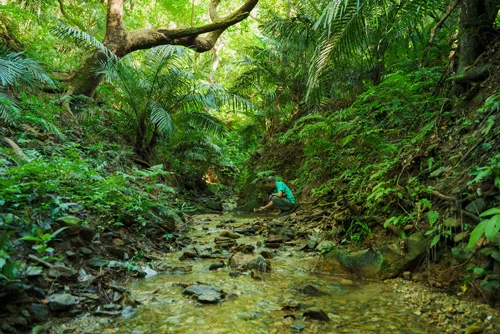

"Asumui was formed from ancient strata that rose up 250 million years ago," Taira, who is also a nature guide, explains. "Over time, trees took root, shaping the mountain we see today. Given its ancient origins, the myth of Asumui as the birthplace of the Ryukyu Islands seems more plausible."
Taira’s village tours start at the Kamiyaa, a sacred site, with a prayer for safe journey. Visitors are then guided through key locations such as the Asagimaa, where gods are believed to descend for rituals, and Shichara Utaki, from where villagers worship Asumui. Kamiyaa used to be the home of the Noro, a female priestess who presided over spiritual matters. On the left side of the house is Tōtōmee (ancestral tablets of Noro) and on the right is the Hinukan, a fire deity honored in kitchens across Okinawa. The Hinukan, once overseen by the Noro, became the village's main object of worship, and Kamiyaa became the center of their spiritual life.
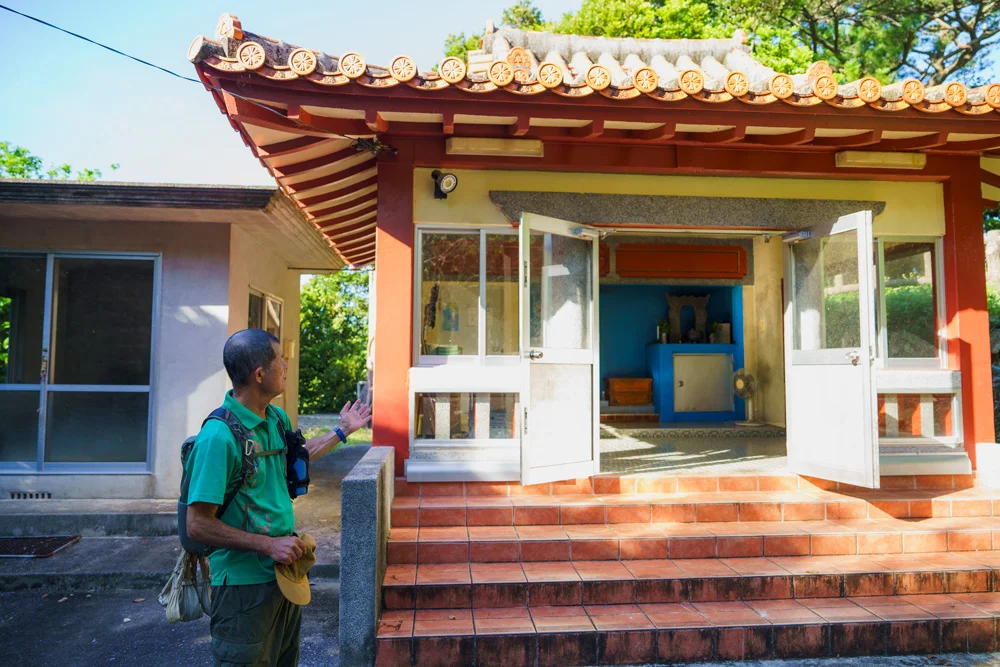
Taira and his fellow spiritual pathfinder, Hiroe Chinen, highlight that the veneration of ancestors symbolized by the Tōtōmee and the worship of nature represented by the Hinukan, are the core of Okinawan faiths.
"When we think of gods, we first think of our ancestors, followed by the Hinukan. These deities have always been close to us. We greet them, talk to them, and make small requests—they are our spiritual foundation," Taira explains.
Chinen adds, "If our ancestors are gods, then we, too, will become gods. As a child, I asked my father, ‘Where do the gods live?’ He told me, ‘They live within you.’ I believe this means our ancestors’ spirits are always with us, watching over us. That’s why, even in hard times, Okinawans remain strong and positive."
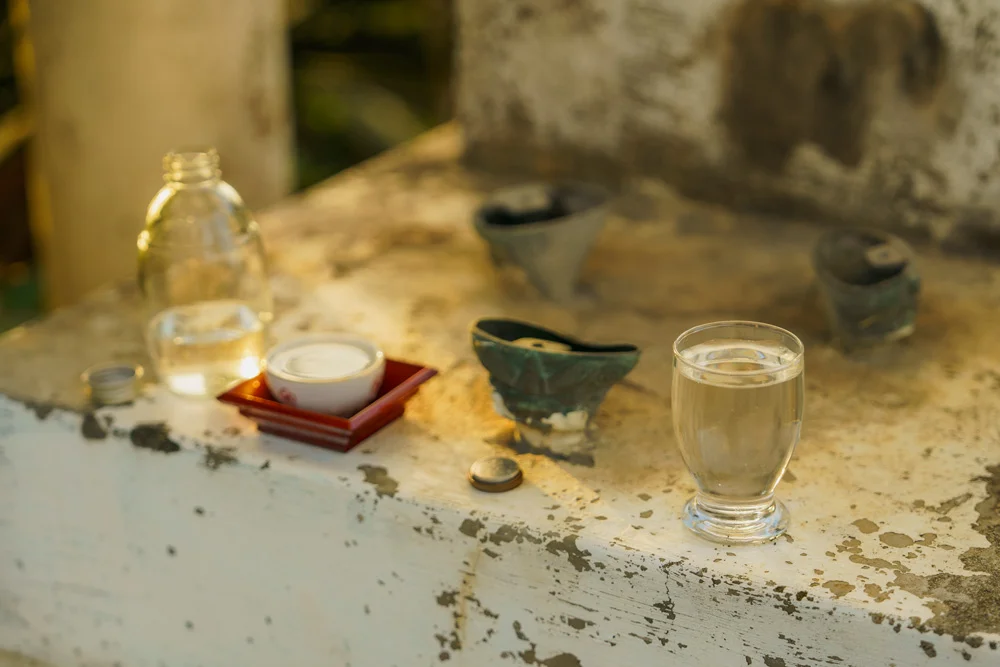
Generations of prayers, and life intertwined with nature—Yambaru has been a place where people continue to honor these sacred ties as they pass down their lives in harmony with the land.
